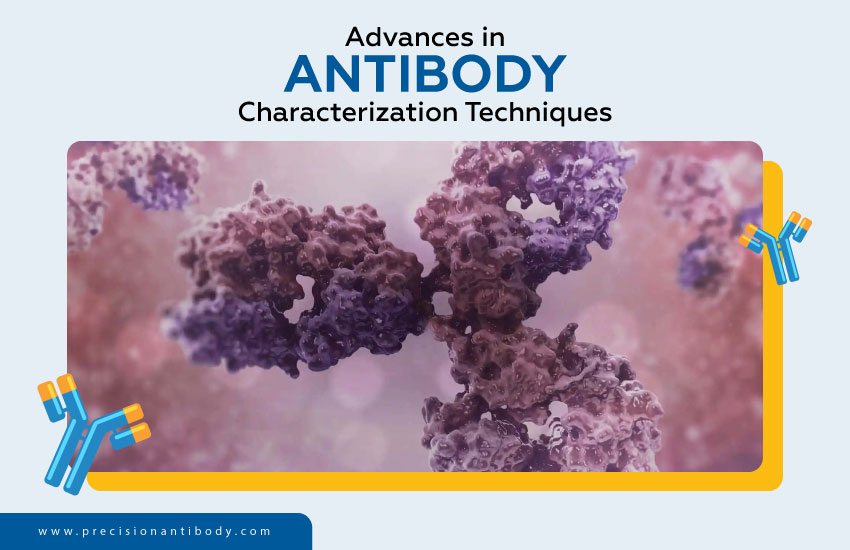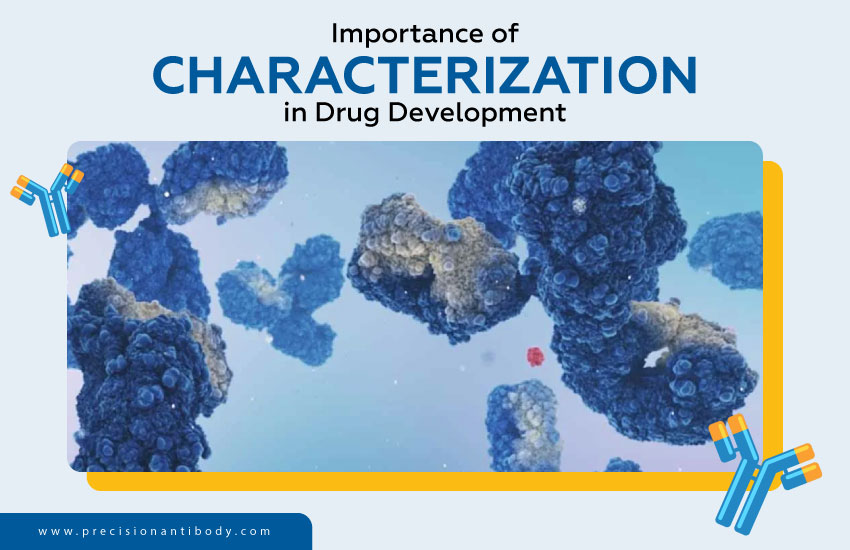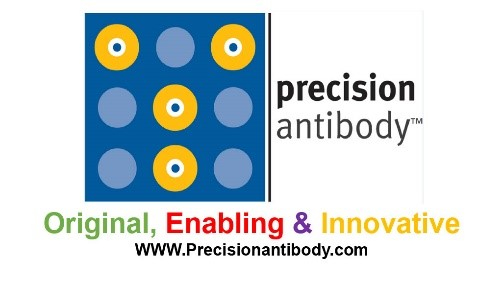The importance of rigorous antibody characterization in biomedical research has grown in 2025. Antibodies help us understand disease causes and validate therapeutic targets by identifying and quantifying proteins. Many antibodies used in research do not recognize their targets or bind to undesired molecules, compromising study findings, wasting resources, producing irreproducible data, and delaying drug development.
Putting in place strong antibody validation processes is crucial to overcoming these obstacles. A simple validation pipeline can help alleviate the reproducibility issue caused by non-specific antibody use. These procedures are essential for guaranteeing the specificity and dependability of antibodies in a range of applications, which raises the validity of study findings.
The development of therapeutic antibodies for the treatment of illness further emphasizes the need for thorough antibody characterization. In order to minimize potential adverse effects and enhance treatment effectiveness, comprehensive characterization is crucial. Explore the implications of antibody characterization. Explore the possibilities of antibody characterization by reading on.

Changes have been made in the field of antibody characterization by the year 2025 in order to accommodate new requirements in the field of pharmaceutical development and biological research. An essential part of this process is the comprehensive structural elucidation of antibody-drug conjugates, also known as ADCs.
In vitro and in vivo biotransformation of ADCs is needed to understand their stability and pharmacokinetic features, which affect their therapeutic efficacy and safety. Advanced analytical approaches have broken down ADCs’ structural subtleties, guiding conjugate optimization for specific cancer therapy.
The careful characterization of antibodies continues to be a vital component of biomedical research as we negotiate the complexity of new diseases and treatment approaches in 2025. It guarantees the creation of efficient treatments, vaccines, and diagnostics, all of which eventually lead to better public health results.
Antibody characterization ensures the specificity, sensitivity, and repeatability of antibodies used in biomedical research. Several validation methods ensure that an antibody only binds to its target antigen and does not cross-react with other proteins. Validation helps scientific research avoid incorrect conclusions and preserve experimental data.
Chromatographic, electrophoretic, and spectroscopic techniques are among the analytical methods used in antibody characterization. These techniques evaluate several aspects of antibodies, including their structural integrity, binding affinity and purity. For example, spectroscopic examinations can reveal information about the structural conformations of antibody variants.
Electrophoretic methods can assess their charge heterogeneity, while chromatographic techniques can separate them. By using these analytical methods, antibodies are guaranteed to be accurately described producing more dependable and repeatable results in both clinical and research contexts.

Biopharmaceutical development and quality control have improved due to antibody characterization advances. Accurate characterization ensures therapeutic antibodies have the required specificity, potency and safety for regulatory approval and clinical efficacy. Analytical advances have allowed more thorough antibody structure and function studies, enabling better biopharmaceuticals.
Biopharmaceutical antibody characterization is becoming increasingly important. As monoclonal antibodies (mAbs) and other antibody-based treatments become more popular, precise and reliable characterization approaches are needed. These therapeutic antibodies must meet strict regulatory standards for specificity, stability and safety from biopharmaceutical businesses.
Detailed characterization is necessary to assess the antibodies’ structural integrity and identify potential flaws like aggregation or inappropriate folding that could impact efficacy or induce unpleasant reactions. Drug development relies on strong characterization methods to understand antibody pharmacokinetics, immunogenicity, and pharmacodynamics, increasing clinical outcomes and therapeutic success.
Therapeutic antibody characterization relies heavily on high-resolution mass spectrometry (HRMS). In order to guarantee the uniformity of therapeutic antibody batches this method offers unmatched precision in recognizing post-translational changes and estimating molecular weights. Additionally HRMS makes it possible to identify antibody variations that may occur throughout manufacturing procedures.
The final product’s consistency and quality are guaranteed by this capacity to spot even the most minor structural variations. Research has shown that HRMS is an effective method for evaluating the stability, folding, and interactions of antibodies with antigens.
The need for monoclonal antibodies (mAbs) in diagnostic and therapeutic settings has grown dramatically. They are perfect for targeting particular diseases, such as malignancies and autoimmune disorders, due to their excellent specificity and capacity to attach to a single epitope. Characterization is essential to verify mAbs’ stability, affinity and batch-to-batch uniformity.
However, polyclonal antibodies can recognize several epitopes on a single antigen, making them useful in diagnostics and research. They are more reactive but complex characterization methods are needed to ensure consistency and understand batch variability. As monoclonal and polyclonal antibodies become more popular, modern analytical methods are essential for their efficacy and safety.
By improving sensitivity and resolution, next-generation platforms have wholly changed antibody characterization. Highly developed methods such as hydrogen-deuterium exchange mass spectrometry (HDX-MS) shed light on the stability and conformational dynamics of antibody-antigen complexes.
Cryo-electron microscopy (cryo-EM) allows high-resolution structural imaging of antibody-antigen interactions, revealing antibody function’s molecular mechanisms. These platforms improve analysis sensitivity and guide the creation of safer, more effective antibody therapeutics by allowing researchers to study antibody mechanisms of action.

In order to ensure that therapeutic compounds are both safe and effective for patient usage, characterization is an essential part of drug development. A thorough examination of a drug’s physical, chemical and biological characteristics at every stage of its creation is part of this process.
A comprehensive characterization of a medicine can help evaluate its mechanism of action, its potency, and any potential adverse effects that may be associated with it. If researchers are able to appreciate these aspects they will be able to reduce the adverse effects of medication and optimize its effectiveness.
The physicochemical and structural investigations, immunological property evaluations, biological activity evaluations, and impurity detection are all examples of what is included in the comprehensive characterization of monoclonal antibodies (mAbs). It is essential to carry out these processes in order to guarantee that the monoclonal antibody will achieve the desired results in clinical settings.
Therapeutic antibodies require extensive validation for specificity and functionality. CRISPR-Cas9 gene editing can confirm antibody-antigen targets by creating double-stranded breaks in immunoglobulin loci, allowing the deletion of native antibody genes and the introduction of new ones to reprogram hybridomas for desired specificities.
This method allows the exact substitution of endogenous antibody genes with synthetic sequences, enabling the creation of customized antibodies. Multiple antibodies targeting distinct epitopes on the same antigen can improve specificity and reduce cross-reactivity. These antibodies can reduce off-target interactions by targeting multiple antigen regions. In therapeutic settings, accurate antibody targeting is essential for efficacy and safety.
In order to ensure that the efficacy and uniformity of medications are maintained, regulatory organizations mandate the use of stringent characterization methods. For example, the World Health Organization (WHO) provides guidelines for the production of monoclonal antibodies (mAbs) and the quality assurance of these antibodies.
These standards stipulate the requirement for structural characterization, the evaluation of biological activity and the evaluation of purity and impurity. It is necessary to demonstrate compliance with these requirements in order to obtain marketing authorization and ensure the safety of patients.
When it comes to generating complex antibody forms, such as bispecific antibodies and antibody-drug conjugates, specific challenges arise in terms of characterization. Highly sophisticated analytical approaches are required in order to analyze the stability of these novel structures, as well as their functioning and potential immunogenicity.
Because they have been thoroughly characterized, these complicated medicines are assured to keep their intended efficacy and safety features over their entire shelf life. At the same time, they are being used in clinical settings.
Concisely, thorough characterization procedures are essential to the creation of new drugs, especially therapeutic antibodies. In the end they support successful clinical outcomes and patient well-being by ensuring that medications are safe, effective, and compliant with regulations.

The characterization of complex antibody formats such as bispecific antibodies and fusion proteins presents significant challenges in drug development. These challenges stem from their intricate structures and multifunctional nature necessitating advanced analytical strategies to ensure their efficacy and safety.
Bispecific antibodies provide novel treatment techniques by being designed to bind two different antigens or epitopes at the same time. However, a number of characterization issues are brought about by their intricate architecture:
Combining two or more different protein domains results in fusion proteins, which are made to maximize the functions of each component. Their distinct structures present particular difficulties for analysis:
A multidisciplinary strategy that combines strong bioanalytical tactics with cutting-edge analytical techniques is needed to overcome these issues. To further the development of these intricate therapeutic modalities, characterization techniques must be continuously established.

Automation and AI are improving drug development characterization efficiency, accuracy, and predictiveness. These technologies simplify complex operations and reveal molecular features, speeding discovery to market.
Automating high-throughput screening and data collecting reduces human error. Robots and platforms can precisely perform sample preparation, assay execution, and data collection. This method boosts throughput and ensures experiment uniformity. Automated liquid handling systems have been used to prepare samples for mass spectrometry-based proteomic investigations, improving protein characterization speed and reproducibility.
Machine learning (ML) and deep learning (DL) techniques have transformed complex biological data analysis. AI models can predict chemical characteristics, binding affinities, and toxicity profiles from vast datasets in drug characterization. DeepMind’s AlphaFold AI technology predicts protein structures from amino acid sequences. This discovery has significant implications for drug characterization by revealing protein function and interactions.
Automation-AI synergy improves characterization. AI algorithms can find patterns and predict from massive data sets from automated processes. Automation can test hundreds of chemicals against biological targets in high-throughput drug candidate screening. AI models analyze the data to identify the best prospects for further development. This integrated strategy speeds lead compound identification and optimization.
Integration of automation and AI into characterisation procedures is complex despite its benefits. Training AI models requires high-quality, curated datasets, and data variability can harm predicted accuracy. To address these issues, researchers are developing explainable AI models and standardizing data creation and analysis processes.
Finally, automation and AI can improve drug characterization speed and accuracy. These technologies are predicted to become increasingly important in pharmaceutical research and development.

Developing targeted therapeutics and improving our knowledge of immune responses depend heavily on developments in antibody characterization. New developments in this field center on the integration of microfluidic technology and single-cell analysis, which together increase data accuracy and offer real-time insights into antibody function.
Conventional bulk studies frequently obscure individual cell heterogeneity, producing averaged results that might miss essential differences. By allowing the analysis of distinct cell characteristics single-cell characterisation overcomes this constraint and provides a more thorough comprehension of antibody diversity and function.
Recent advancements have greatly improved single-cell analysis capabilities in microfluidic technologies. Individual immune cells can be isolated and examined using microfluidic devices which makes high-throughput screening and thorough phenotypic characterization possible.
For example: immune cell signaling, migration, and antibody creation at the single-cell level have been studied using microfluidic systems that use continuous flow, nanowells, valves, and droplets.
To further immunological research and medicinal development, it is imperative to increase the accuracy of data interpretation in antibody studies. Real-time monitoring methods and the application of microfluidics are two noteworthy strategies that are assisting with this improvement.
Antibody research has been transformed by microfluidic devices which allow for high-throughput investigations and exact control over the biological environment. By classifying and evaluating immune cells according to physical characteristics like size and form, these tools enable the enrichment of particular subpopulations.
In order to isolate cells of interest for additional antibody characterisation, white blood cells have been extracted from whole blood samples using methods such as hydrodynamic filtration and deterministic lateral displacement.
Researchers can gain dynamic insights into the interactions and activities of antibodies using real-time monitoring techniques. By combining contemporary imaging and biosensing technologies with microfluidic devices researchers may observe antibody-antigen interactions, binding kinetics, and cellular reactions as they happen.
These real-time data discoveries are significant for gaining an understanding of the mechanisms that underlie immune responses and for designing medications that are grounded on antibodies that are successful therapeutic options.
In conclusion, the process of characterizing antibodies has advanced necessarily with the combination of single-cell analysis and microfluidic technology. These techniques offer detailed information about the actions of individual cells and enhance the quality of data interpretation both of which eventually aid in the creation of more potent immunotherapies.
Antibody characterization is advancing rapidly to improve drug efficacy and safety. Innovations like automation, artificial intelligence, microfluidics and single-cell analysis enhance characterization methods, enabling deeper insights into molecular interactions and addressing challenges with fusion proteins and bispecific antibodies.
Single-cell characterization has enabled unprecedented antibody diversity and activity analysis. Automation and AI have accelerated data interpretation, streamlined procedures, and provided real-time antibody behaviour monitoring. Microfluidics has enabled real-time antibody interaction insights and high-throughput screening in bulk and single-cell studies.
These technologies have considerable potential, but inconsistent results, immunogenicity problems, and new antibody form complexity demand innovation and cooperation. Safer and more effective immunotherapies will result from multidisciplinary approaches. These findings revolutionize antibody characterization, enabling new treatments and better patient outcomes. Visit our website to read more about antibody characterization trends and issues if you like this. We want your feedback and questions below!

Led by innovative minds in immunology and the antibody development field, Precision Antibody has been an industry leader for over 20 years. We not only implement a cutting-edge technique in antigen design, antibody development, production, and other analyses, but we are also constantly working on ways to improve and advance technology to match the ever-changing world of science. If you are interested in learning more about Precision Antibody’s Custom Antibody development.
Precision Antibody™ is the forefront of the global Custom Antibody industry & it is led by the innovative minds in immunology and antibody development field.